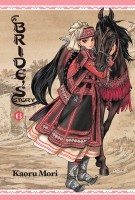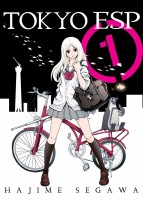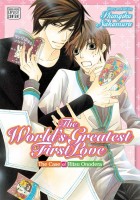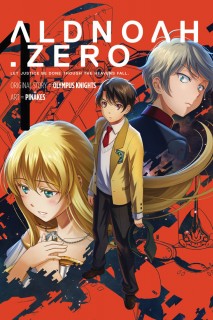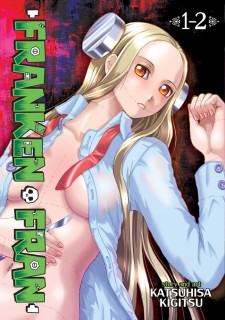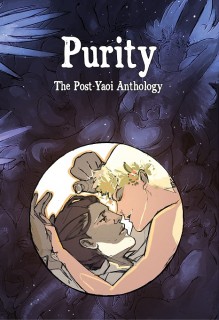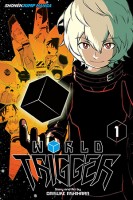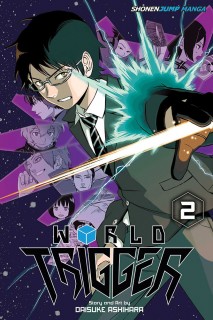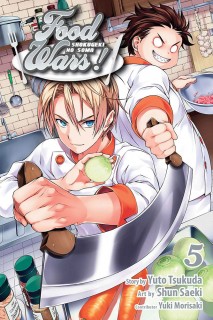My News and Reviews
I was finally able to post February’s Bookshelf Overload at Experiments in Manga last week, a few days later than I originally intended, but at least it’s up. I’ve been intentionally decreasing the number of new manga and other things that I’m buying at the moment, which means that I’ll be happily digging into my backlog and catching up on older series. I also posted an in-depth review last week, though perhaps it’s more of a summary. Either way, Mechademia, Volume 10: World Renewal contains some interesting material for those looking for a more scholarly approach to the study of manga, anime, and other Japanese popular culture. The volume also includes “Nanohana,” a short manga by Moto Hagio, and a story by Tomoyuki Hoshino called “Good Morning.” I am very fond of both creators’ work, so that made me especially happy to see.
Interesting things found online last week: Viz Media will apparently be releasing a new volume of Haikyu every month after it’s debut in July until the English edition catches up with the Japan’s releases, which is rather impressive. Yokai scholar and manga translator Zack Davisson wrote a great piece for The Comics Journal called Confessions of a Manga Translator. (Some of the comments are worth reading, too.) VICE has an interview with Gengoroh Tagame, who will also be participating in the Queer Japan documentary. (The Kickstarter campaign for the project ends very soon and could use some additional support; if it at all interests you, please consider contributing!) Graham Kolbeins, the filmmaker behind the documentary was recently interviewed as well.
Quick Takes
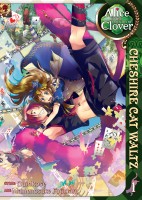 Alice in the Country of Clover: Cheshire Cat Waltz, Volumes 1-4 by Mamenosuke Fujimaru. With the extraordinary number of retellings, spinoffs, and sequels to Alice in the Country of Hearts, it can be somewhat daunting to know where to start. Fortunately, I have people looking out for me; Cheshire Cat Waltz was one of the series that was repeatedly recommended by multiple individuals. Although it still has the same vaguely ominous atmosphere (which I like), the Country of Clover is actually a slightly different setting than the Country of Hearts. Even the personalities of the characters that are shared between the two are somewhat changed as they adapt to their modified roles. I found Boris, the Cheshire Cat, an especially interesting character in the first manga series, so it probably makes sense that I would enjoy a series where he plays a leading role. Admittedly, the pairings in the various Alice in the Country of manga that I’ve read certainly shouldn’t be lauded as examples of healthy relationships. Boris, as sweet and considerate as he can sometimes be, is also very possessive. The story is engaging, though, and Cheshire Cat Waltz is surprisingly steamy as well.
Alice in the Country of Clover: Cheshire Cat Waltz, Volumes 1-4 by Mamenosuke Fujimaru. With the extraordinary number of retellings, spinoffs, and sequels to Alice in the Country of Hearts, it can be somewhat daunting to know where to start. Fortunately, I have people looking out for me; Cheshire Cat Waltz was one of the series that was repeatedly recommended by multiple individuals. Although it still has the same vaguely ominous atmosphere (which I like), the Country of Clover is actually a slightly different setting than the Country of Hearts. Even the personalities of the characters that are shared between the two are somewhat changed as they adapt to their modified roles. I found Boris, the Cheshire Cat, an especially interesting character in the first manga series, so it probably makes sense that I would enjoy a series where he plays a leading role. Admittedly, the pairings in the various Alice in the Country of manga that I’ve read certainly shouldn’t be lauded as examples of healthy relationships. Boris, as sweet and considerate as he can sometimes be, is also very possessive. The story is engaging, though, and Cheshire Cat Waltz is surprisingly steamy as well.
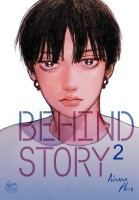 Behind Story, Volumes 2-3 by Narae Ahn. I enjoyed the first volume of Behind Story more than I thought I would, so I wanted to be sure to read more of the boys’ love manhwa. At the time, I didn’t even know how long the series was, and I wasn’t able to find out much about the creator, either. It turns out Behind Story is only three volumes, was Ahn’s debut series, and was originally published online. The final two volumes of Behind Story take place three years after the first. Johann has survived his teacher’s attempted murder-suicide, but his life is still a complicated mess; he’s more or less forced transfer out of school, leaving Taehee—one of the very few people who legitimately cared for him and his well-being—behind with no way to contact him. Eventually the two of them do reunite, but they’ve both changed over the years and neither are sure what direction their relationship will take in the future. Behind Story is a fairly solid debut with interesting characters and a story that, for the most part, moves beyond the genre’s standard tropes. The series’ ending does perhaps wrap up a little too quickly and nicely and could have used a little more development, but overall the manhwa is enjoyable.
Behind Story, Volumes 2-3 by Narae Ahn. I enjoyed the first volume of Behind Story more than I thought I would, so I wanted to be sure to read more of the boys’ love manhwa. At the time, I didn’t even know how long the series was, and I wasn’t able to find out much about the creator, either. It turns out Behind Story is only three volumes, was Ahn’s debut series, and was originally published online. The final two volumes of Behind Story take place three years after the first. Johann has survived his teacher’s attempted murder-suicide, but his life is still a complicated mess; he’s more or less forced transfer out of school, leaving Taehee—one of the very few people who legitimately cared for him and his well-being—behind with no way to contact him. Eventually the two of them do reunite, but they’ve both changed over the years and neither are sure what direction their relationship will take in the future. Behind Story is a fairly solid debut with interesting characters and a story that, for the most part, moves beyond the genre’s standard tropes. The series’ ending does perhaps wrap up a little too quickly and nicely and could have used a little more development, but overall the manhwa is enjoyable.
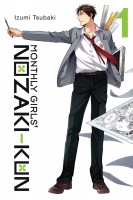 Monthly Girls’ Nozaki-kun, Volume 1 by Izumi Tsubaki. I absolutely loved the anime adaptation of Monthly Girls’ Nozaki-kun, so I was very happy when Yen Press announced that it would be releasing the original manga series. The success of four-panel manga can be rather hit-or-miss in the North American market as their comedy is often firmly situated within a Japanese sense of humor and context. A few of the jokes in the first volume of Monthly Girls’ Nozaki-kun I may not have immediately understood if I hadn’t already seen the anime (which was able to more fully expound on things due to its format) but overall the manga and its gags are largely accessible and very funny. The series revolves around Nozaki—a relatively successful shoujo mangaka who has a difficult time convincing many of his high school classmates of that fact due to his large stature and seemingly stoic nature—and the various students who become his assistants or the inspiration for his characters. The manga is good-natured fun, much of the humor the result of the differences between the characters’ personalities and how most other people actually perceive them. I especially appreciate the series’ willingness to play with gender roles and expectations.
Monthly Girls’ Nozaki-kun, Volume 1 by Izumi Tsubaki. I absolutely loved the anime adaptation of Monthly Girls’ Nozaki-kun, so I was very happy when Yen Press announced that it would be releasing the original manga series. The success of four-panel manga can be rather hit-or-miss in the North American market as their comedy is often firmly situated within a Japanese sense of humor and context. A few of the jokes in the first volume of Monthly Girls’ Nozaki-kun I may not have immediately understood if I hadn’t already seen the anime (which was able to more fully expound on things due to its format) but overall the manga and its gags are largely accessible and very funny. The series revolves around Nozaki—a relatively successful shoujo mangaka who has a difficult time convincing many of his high school classmates of that fact due to his large stature and seemingly stoic nature—and the various students who become his assistants or the inspiration for his characters. The manga is good-natured fun, much of the humor the result of the differences between the characters’ personalities and how most other people actually perceive them. I especially appreciate the series’ willingness to play with gender roles and expectations.

